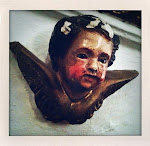
(Photo: Ana Ma. Pimentel)
It’s the evening of March 21st. The sun begins to fall, and there’s a giant snake of light descending through the stairs of “The Castle” pyramid in Chichén Itzá, Yucatán. It’s Kukulkán, the feathered serpent which announces the time to start the harvest. Don’t forget that "El Castillo" at Chichén Itzá was voted one of the seven wonders of the world! In Dzibilchaltún (16 km <9.9>North of Mérida, capital of Yucatán), the equinox happens at the "7 Dolls" where the rising sun seems to rest on the central gate of the temple, and announces the beginning of springtime. These phenomena highlight the advanced Mayan knowledge of astrology and mathematics, because in conjunction with their religion, they developed a calculation system for harvesting. Famous for its transparency, and close gaps in Merida are Celestun and puerto Progreso.
Getting There:
Teotihuacán: 48km away from Mexico city, take Pachuca Exit.
Dzibilchaltún: 22 km northeast of Merida on the road no. 261, turning on the right at kilometer 16.
Chichén Itzá, 116 km from Mérida on 180 road or through the highway.
Fees:
Chichén Itzá and Teotihuacán: $ 51.00 pesos
DZIBILCHALTÚN: $ 49.00 pesos (Seniors, students and children are exempt from payment)
What you need to know:
Equinox comes from the Latin equus for equal and nox for night, because during this phenomenon day and night last 12h worldwide.
There are two equinoxes each year: spring and autumn, around 21 March and 20 September respectively.
Mayan god Kukulcán is also known as Quetzalcóatl in náhuatl, Gucumatz in Quiche.
Dzibilchaltún means "where there is writing on flat stones" and his temple is called "Temple of the Seven Dolls" by offering seven clay dolls found inside.
The solar phenomenon was discovered in 1982 Dzibilchaltun.
VIP Tip:
Hat, sun block and plenty of water are essential!
Where ever you decide to enjoy this wonderful event,be ready to find excited crowds.
Teotihuacan usually opens at 5am for visitors to enjoy the sunrise at the archaeological site.


No comments:
Post a Comment
people said